The Church
The Church
The church of the martyr, St. Prisca, was built during the reign of Pope Onorio I, between the end of the fourth and the beginning of the fifth centuries on the Aventine Hill, one of Rome’s most famous hills, rich in Christian and pagan history.
This church deserves to be called the ‘Basilica of St. Prisca’ owing to its structure (it has three naves supported by 14 columns decorated with Corinthian capitals), the fact that it was built during the paleochristian period, and its venerable and prominent site.
Over the centuries the church has been restored several times: by Adriano I (772-795) and by Pasquale II (1099-1118). During the 15th century a fire destroyed the fore of the church, which was subsequently rebuilt by Callisto III (1455-1458).
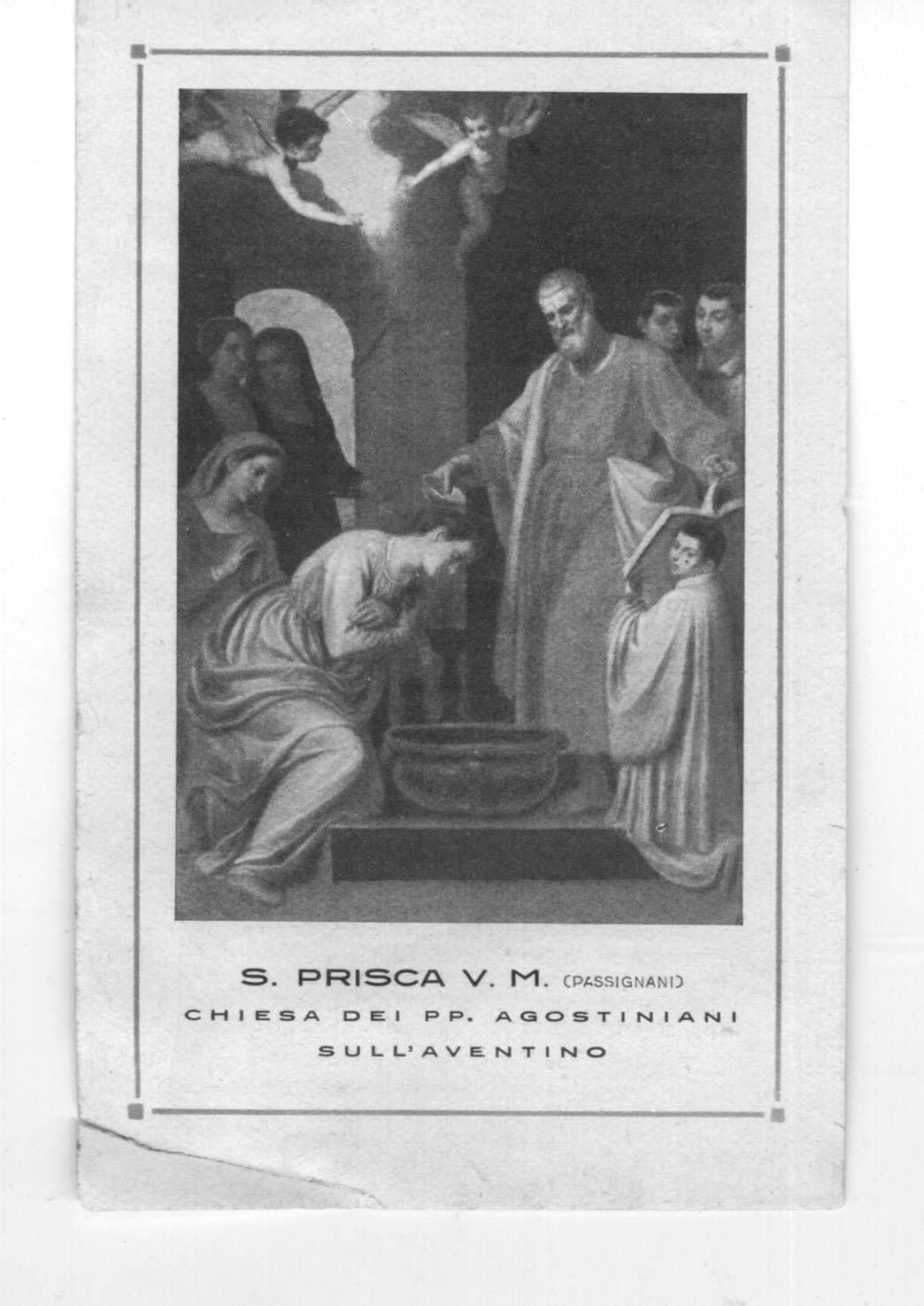 With regards to the identity of the Saint, the Acta Sanctorum tells of a 13 year old girl who was imprisoned during Emperor Claudio’s reign for having refused to worship the statue of Apollo. Since she continued to profess her Christian faith, she was whipped and thrown to the lions in the Circo Massimo. Instead of attacking her, the lions laid down at her feet. She was imprisoned again, whipped and tied to the stake. But even the flames left her unharmed. Finally, she was taken to the 10th Milliarium of the Via Ostiense and beheaded.
With regards to the identity of the Saint, the Acta Sanctorum tells of a 13 year old girl who was imprisoned during Emperor Claudio’s reign for having refused to worship the statue of Apollo. Since she continued to profess her Christian faith, she was whipped and thrown to the lions in the Circo Massimo. Instead of attacking her, the lions laid down at her feet. She was imprisoned again, whipped and tied to the stake. But even the flames left her unharmed. Finally, she was taken to the 10th Milliarium of the Via Ostiense and beheaded.
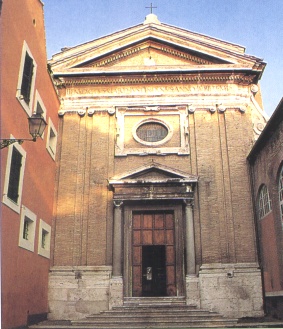 The façade of the church was redesigned during the 16th century by the architect Carlo Lombardi of Arezzo, during the reign of Clement VII. The imposing tympanum rests on four pillars encased in the wall, starting from one column base. In the centre there is a grand door flanked by two roman granite columns and nowadays is the only entrance to the church.
The façade of the church was redesigned during the 16th century by the architect Carlo Lombardi of Arezzo, during the reign of Clement VII. The imposing tympanum rests on four pillars encased in the wall, starting from one column base. In the centre there is a grand door flanked by two roman granite columns and nowadays is the only entrance to the church.
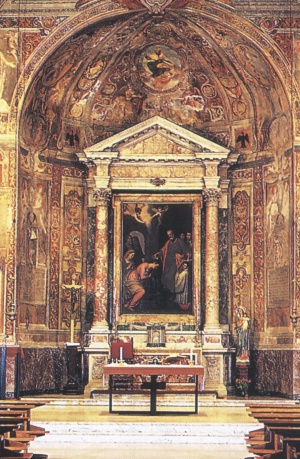 The main baroque altar designed by the architect Lombardi is surrounded by frescoes depicting the martyrdom of St. Prisca V.M. and the transportation of her relics by Pope Eutichiano.
The main baroque altar designed by the architect Lombardi is surrounded by frescoes depicting the martyrdom of St. Prisca V.M. and the transportation of her relics by Pope Eutichiano.
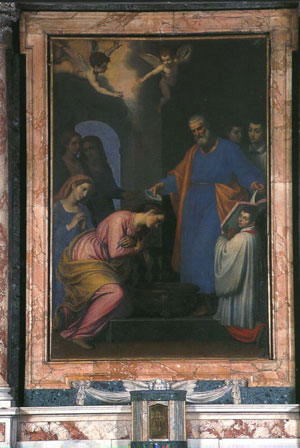 The altar piece depicts St. Prisca being baptized by St. Peter and was executed by Domenico Cresti, also known as Il Passignano (1560-1636).
The altar piece depicts St. Prisca being baptized by St. Peter and was executed by Domenico Cresti, also known as Il Passignano (1560-1636).
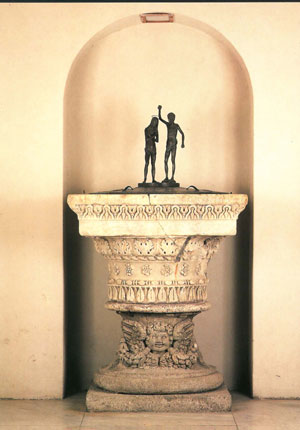 The 1st century baptismal font was previously kept in the crypt. Legend tells that St. Peter baptized St. Prisca in this very font.
The 1st century baptismal font was previously kept in the crypt. Legend tells that St. Peter baptized St. Prisca in this very font.




